What to know
- Elastomeric respirators can be used to protect against gases, vapors, or particles.
- Elastomeric respirators are reusable and can be cleaned and disinfected.
- Elastomeric respirators require fit testing.
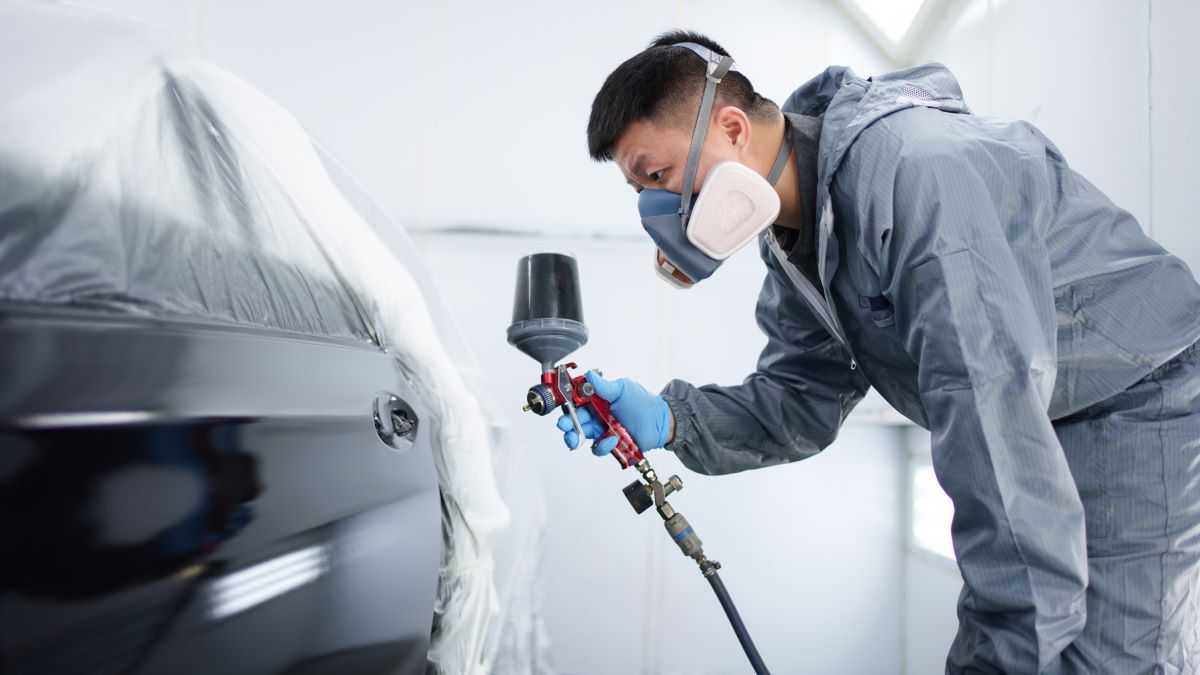
Overview
There are three types of elastomeric respirators:
- Elastomeric quarter facepiece respirators
- Elastomeric half mask respirators (EHMRs)
- Elastomeric full facepiece respirators
Elastomeric respirators are reusable devices. They must form a tight seal to the user's face; and therefore, require fit testing. Some elastomeric respirators have an exhalation valve. These valves can increase the user's comfort by reducing breathing, removing moisture, and reducing CO2 concentrations inside the respirator.
Elastomeric respirators protect against gases, vapors, and particles if equipped with the appropriate filters, cartridges, or canisters. To protect workers from hazardous particles, elastomeric respirators can be equipped with the same nine filter classes as filtering facepiece respirators.
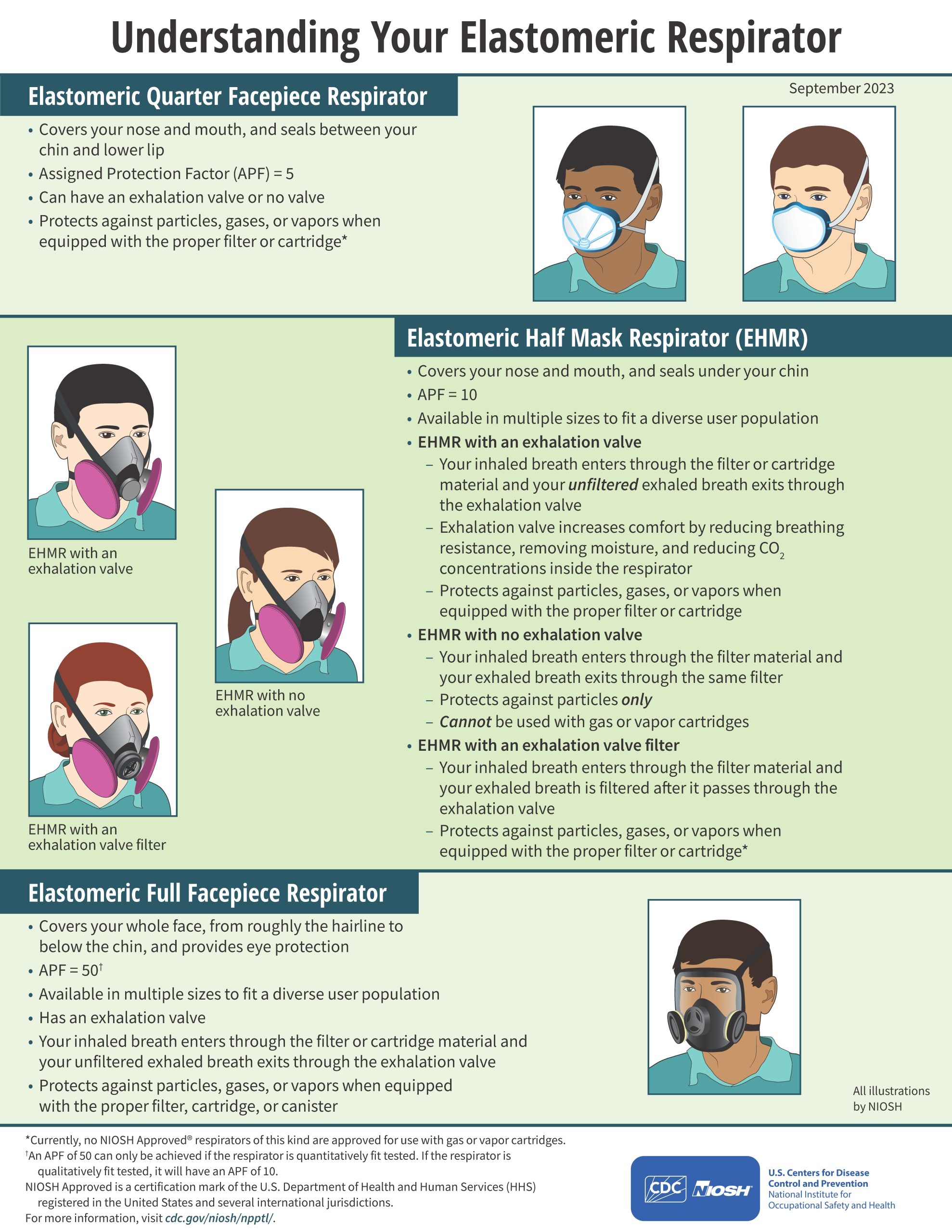
Download English, Spanish, Arabic, Chinese, Tagalog, Vietnamese
Elastomeric quarter facepiece
Elastomeric quarter facepiece respirators are reusable devices with exchangeable cartridges or filters. They protect against particles, gases, or vapors when equipped with the proper filter or cartridge.A
Elastomeric quarter facepiece respirators cover your nose and mouth, sealing between your chin and lower lip. NIOSH has approved these respirators with and without exhalation valves. Elastomeric quarter facepiece respirators without exhalation valves only provide particulate protections (e.g., N95® or P100® protections).B
Elastomeric half mask
EHMRs are reusable devices with exchangeable cartridges or filters. The facepieces are made of synthetic or natural rubber material that allow repeated cleaning, disinfection, storage, and reuse. The facepiece of an EHMR must form a tight seal against your face, covering your nose and mouth.
EHMRs typically have exhalation valves, but some are designed without an exhalation valve or with an exhalation valve filter. EHMRs with an exhalation valve or an exhalation valve filter can protect against gases, vapors, or particles when equipped with the proper filter or cartridge.C EHMRs without an exhalation valve are only approved for use with particulate filters. They cannot be equipped with gas or vapor cartridges.
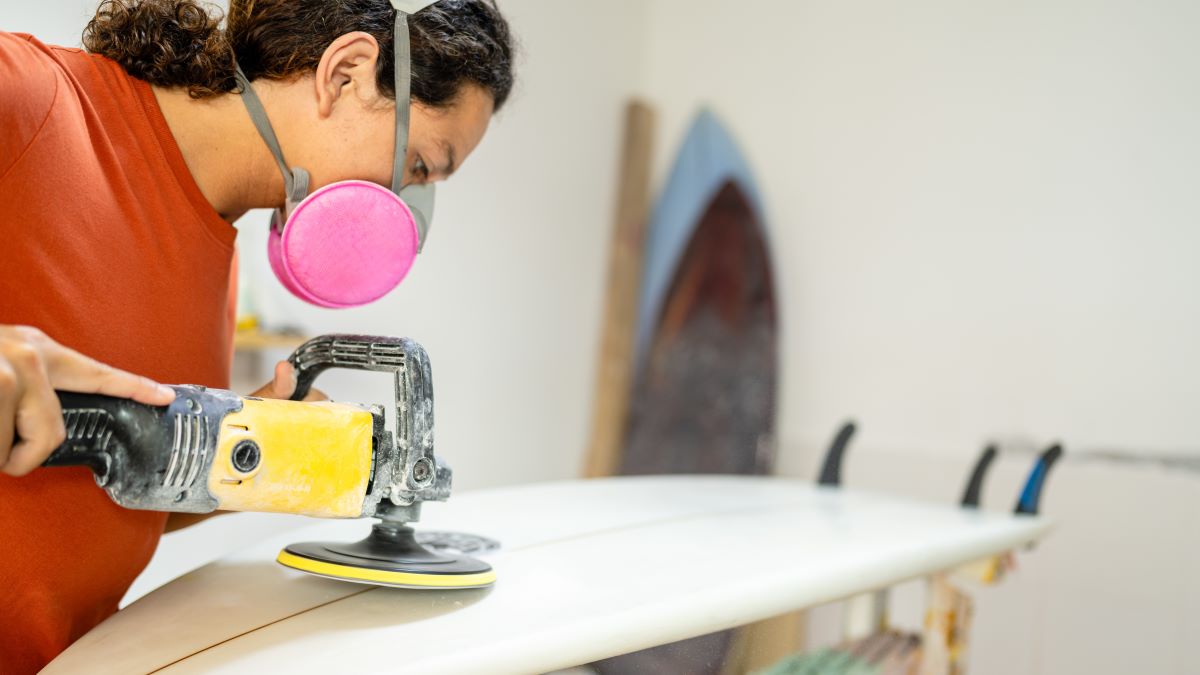
Benefits
- Reusable
- Replaceable filter elements
- Offers at least equivalent or more protection than N95 filtering facepiece respirators (FFRs)
Potential challenges
- May interfere with communication and downward gaze
- Storage between work shifts
- Needs cleaning and disinfecting
Cleaning
When cleaning and sanitizing your EHMR, the manufacturer's guidelines should always be followed. If guidance is not included with the packaging of your respirator, check the manufacturer's website. If guidance is not available, OSHA provides general cleaning and sanitizing guidelines.
Use in healthcare
Although more popular in industry settings, EHMRs have been used in healthcare settings during public health emergencies. EHMRs can be a good alternative when N95 FFRs are in short supply since they provide the same, or greater, level of protection.
Although, some EHMRs have an exhalation valve which should be taken into consideration before use in a sterile setting or for use as source control.
With proper use, fit, and maintenance training, EHMRs provide an effective solution to supplementing the supply of N95 FFRs.
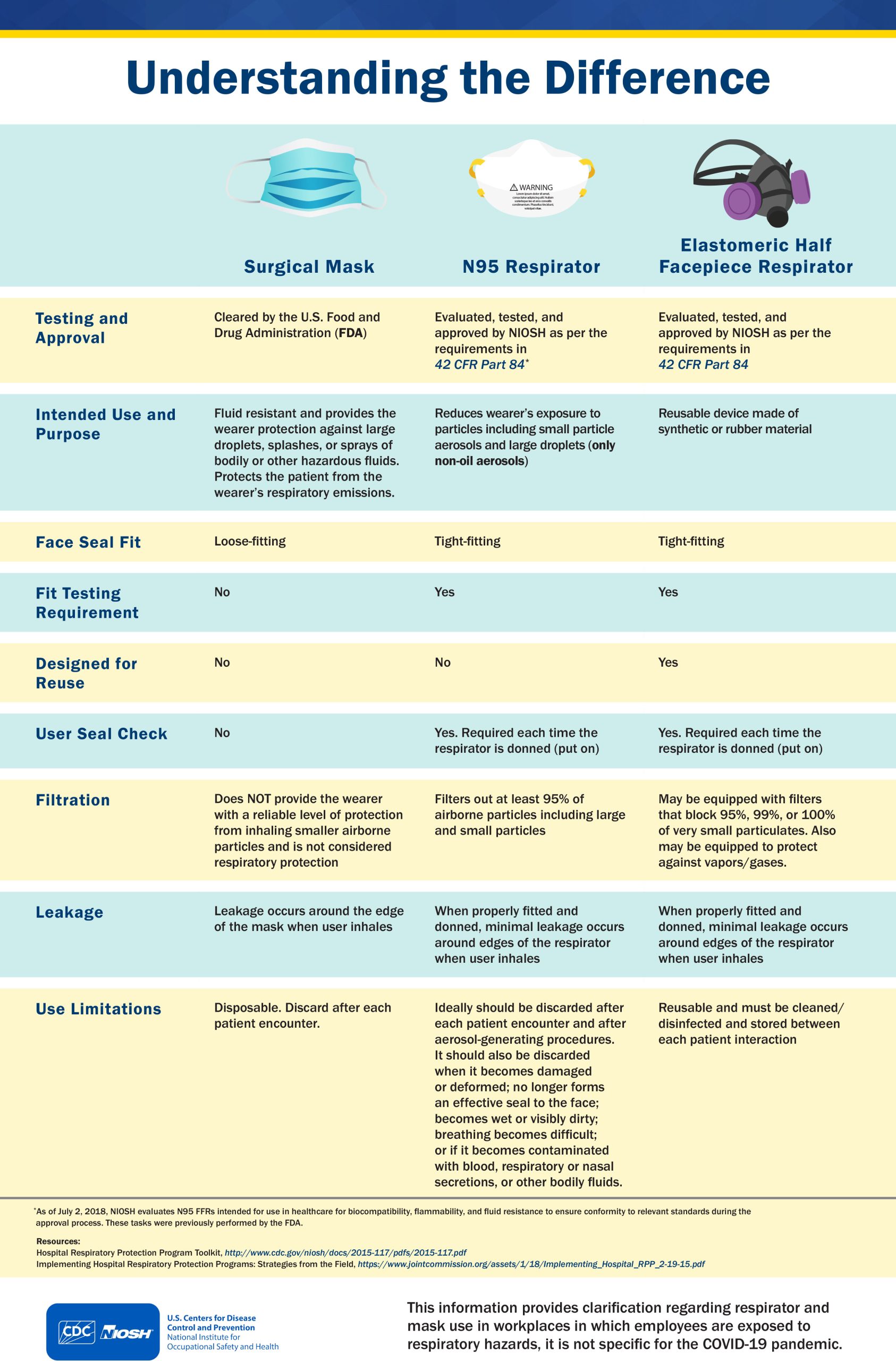
Download English, Spanish, Arabic, Chinese, Tagalog, Vietnamese
Elastomeric full facepiece
Elastomeric full facepiece respirators are reusable devices with exchangeable cartridges, canisters, or filters. They can be used to protect against gases, vapors, and particles if equipped with the appropriate filters, cartridges, or canisters.
Elastomeric full facepiece respirators are made of rubber or silicone and have a clear plastic lens that covers the face and provides eye protection. Since they cover the face and eyes, they can also be used to protect against liquid splashes and irritating vapors. These respirators tend to provide a more reliable face seal than FFRs or EHMRs.
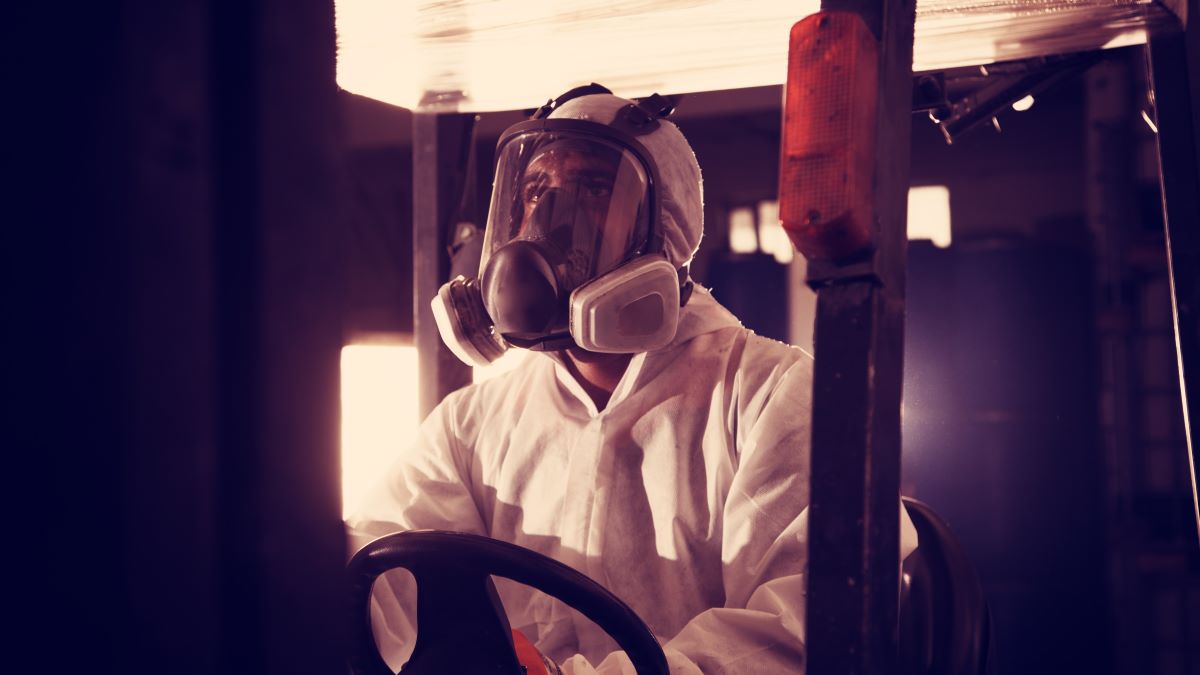
- Currently, no NIOSH Approved respirators of this kind are approved for use with gas or vapor cartridges.
- NIOSH’s standard 42 CFR Part 84 requires all elastomeric quarter facepiece respirators and EHMRs used with chemical cartridges to have functional inhalation and exhalation valves. This is to protect the cartridge from the excessive moisture in exhaled air.
- Currently, there are no NIOSH Approved EHMRs with an exhalation valve filter on the market that are approved for use with gas or vapor cartridges.
- N95 is a certification mark of the U.S. Department of Health and Human Services (HHS) registered in the United States and several international jurisdictions.
- P100 is a certification mark of the U.S. Department of Health and Human Services (HHS) registered in the United States.
